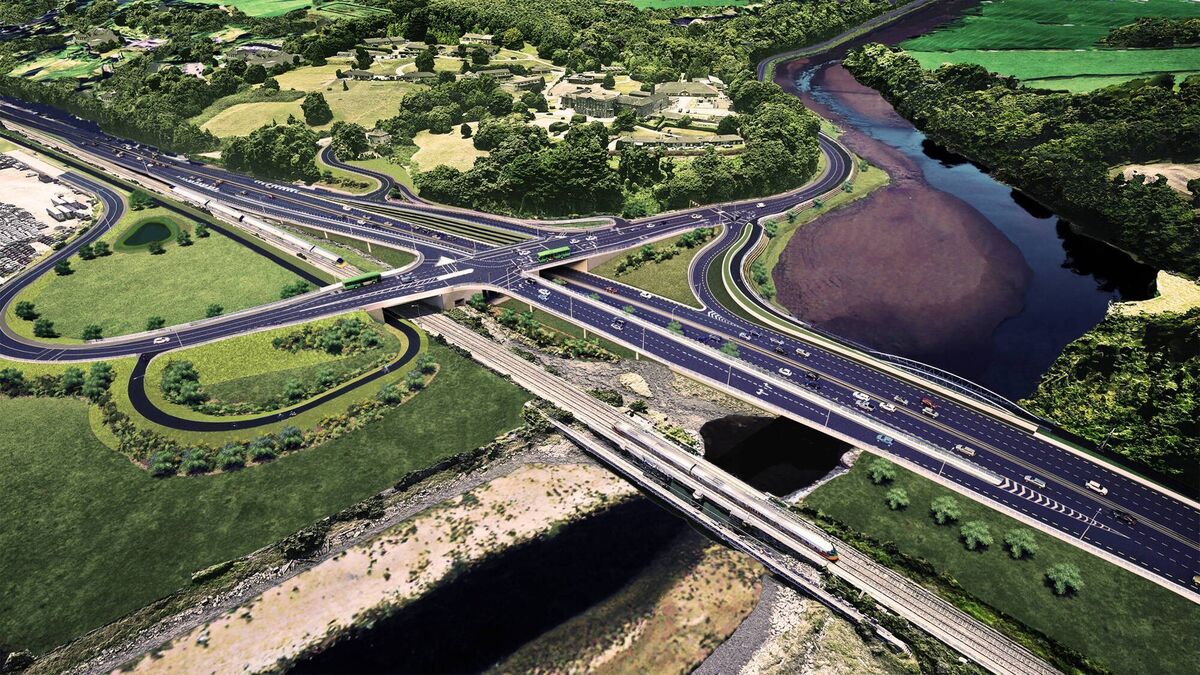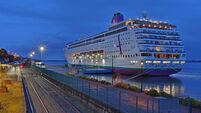Maritime economy: Good tides and tidings for thriving Irish ports

Big marine changes: Port of Cork company (PoCC) wraps up a €100m investment in facilities for offshore renewable energy by 2026. Going forward, the port will move towards reclaiming a further 80 acres of land at Ringaskiddy, having sold its iconic Port of Cork/Cork Harbour commissioners/bonded warehouse site in 2021 for c.€7m.
Tides come in and ebb out in Ireland’s ports and harbours, both metaphorically and literally, as well as historically, from Vikings and visitors to vital economy supporting goods.
As an island nation, it’s little surprise that the country’s main cities – Dublin, Cork, Limerick, Belfast, Waterford and Galway – are all set by natural harbours and ports, naturally endowed havens evolving as key human settlements and growing since Viking and even pre-Viking and Norse days or raiding and trading. Today, over 40% of the Irish population lives within 5kms of the coastline.
Raiding, war mongering and our once vast defensive structures for naval fleets may be more or less confined to the past.
However, trading is ever-key given that over 90% of goods come into and leave the Republic by sea and our harbours, over 50 million tonnes in 2024 according to the Central Statistics Office, import c.35 million tonnes vs exporting 15 million tonnes of merchandise in volume terms. Port of Cork alone accounted for c.9 million tonnes last year.
Activity in Ireland’s key ports has evolved over centuries, as rivers got dredged, quays were created and land reclamation gave space near cities for shipping trade: more recently, given the inexorable rise in ship size, activity has begun to move back downriver from city centres, to Shannon Foynes in the case of Limerick; continuing on to Belfield in the case of Waterford since the 1900s, and on downriver to Ringaskiddy and Marino Point in the case of Cork city, decanting from the city’s north and south quays and some 140 acres at Tivoli.

Dublin is a bit of an outlier, handling c.36 million tonnes of cargo annually, with little decanting or relocation plans other than reconfiguration to move activity from its current c.650 acres of land (equivalent to 50% of the built-up city centre) on both sides of the Liffey, with activity along 3km of waterfrontage.
Change is well underway in the case of Cork harbour, city quays and now being tee-ed up for Tivoli, with plans revealed last month for infrastructure and access investment to enable it become a location for up to or over 5,000 residential units.
Already (and, as targeted over the past two decades and more), port activity has reduced on the city’s north and south quays as can be easily seen already with the arrival of new replacement activities and uses, led by office blocks at Albert Quay and Horgan’s Quay where once ships berthed and unloaded bulky, dusty and dirty cargoes.
New apartments are coming onstream at Horgan’s Quay from developers Clarendon/BAM, with the Land Development Agency (LDA) facilitating delivery as a sort of ‘midwife’ for c.300 homes in this early outlier.
Work is also in train at the former Live at the Marquee site, branded Marina Quarter, with Glenveagh Properties advancing on the first of c.1,000 apartments. O’Callaghan Properties have planning for a €350m mixed use development including residential by Kennedy Quay, where old silos (and, silo thinking) have crumbled downriver of their Navigation House office scheme.
Alongside the extraordinary success of the Marina Market shows a citizenry’s appetite for diversity downriver of the ‘old’ city island centre as a new residential quarter inches its way forward, and as new proposals for an events centre in this area seem to be regaining traction.
Vast other sites also exist for up to 25,000 new homes on Cork’s north and south quays over coming decades, knitting back historic threads for a new city quarter: similar plans were first mooted by the then Cork Corporation as far back as 1780s for the so-called south slobs, to include wide street and urban grids …. so change comes dripping slow.
Change is already a feature in the harbour’s myriad deeply embedded, anchored and expanding residential communities at the likes of Cobh, Crosshaven, Passage West/Monkstown/Glenbrook and down towards Ringaskiddy, as well as at the ‘energy hub’ on the eastern side at the likes of Aghada and Whitegate, with residents of all setting savouring the salty tang of a life by the sea.

Port of Cork company (PoCC) wraps up a €100m investment in facilities for offshore renewable energy by 2026 and next moves towards reclaiming a further 80 acres of land at Ringaskiddy, having sold its iconic Port of Cork/Cork Harbour commissioners/bonded warehouse site in 2021 for c €7m (a 34-story tower/€150m development was mooted by Irish/New York buyers, not yet moved on).
PoCC’s economic and activity eggs are now in the lower harbour basket, with next-stage growth dependent on the M28 to Ringaskiddy (in train), and with other infrastructure/roads developments awaited including to Marino Point/Belvelly: development here will naturally need to balance economic drivers and employment with environmental concerns.
Even to an objective outsider’s eye, Cork has a number of natural attributes to enable it increase its attraction across a number of fronts, leading with fact it’s one of the largest natural harbours in the world often rated as second only to Sydney: Cork has 50 sq kilometres of sheltered waters vs 55 sq kms for Sydney, and with numerous deep and often scenic inlets within its folds.
That claim/boast isn’t just a tourism slogan, and could be marketed and themed as such even more strongly – the city’s crest ‘Statio Bene Fina Carinis’ is centuries’ old, and translates as ‘a good and safe harbour for ships.’
As the city and harbour pivot from historical uses and strengths – think boatyards, the military forts and Martello towers dotted about, from the large once mighty naval base at Haulbowline, to the 18th and 19th centuries Spike Island/Fort Mitchel, Camden, Carlisle, Cove (Fort Meagher) and Templebreedy – to a multi-stranded future, there’s a eagerness among city, county and harbour inhabitants for the port and harbour to continue to hold and future-proof a special place in hearts and minds.
Already, think harbour embracing movements like the music and arts festival Sounds from Safe Harbour; the annual Ocean to City race participated in by hundreds, if not thousands; Meitheal Mara’s success in getting landlubbers out of the Lee and harbour waters; the reputation of Cork Week at the venerable Royal Cork Yacht Club; the step-by-step aspiration for a Lee to Sea (L2S) c.45km long greenway from Inniscarra dam to Crosshaven, via Ballincollig, the city centre, Blackrock, Passage West and Monkstown, and Shanbally, and more.
It’s c.20 years since Celtic Tiger times developers Howard Holding mooted a river taxi service linking the city by its successfully-developed City Quarter development to Passage West, Crosshaven, Little Island and other points, piers and jetties.
The idea sort of sank with them in the Crash, but similar innovative thinking on smaller scales has followed since.
Other harbour-knitting threads include sea safaris and boat tours from the city centre to the lower harbour; occasional city island circumnavigation trips by kayak, kayak clubs at the Lee Fields and elsewhere, boat hire and other trips from heritage-rich Cobh to Spike and elsewhere, as well as a massive influx of visitors from over the waters and oceans, via cruise ships to Cobh (over 90, with 170,000 visitors in 2025 according to Port of Cork, and spilling out to the likes of Bantry, Glengarriff too for smaller craft and Youghal had a cruise ship visit in the recent summer.
Only thing missing really is the Vikings…













